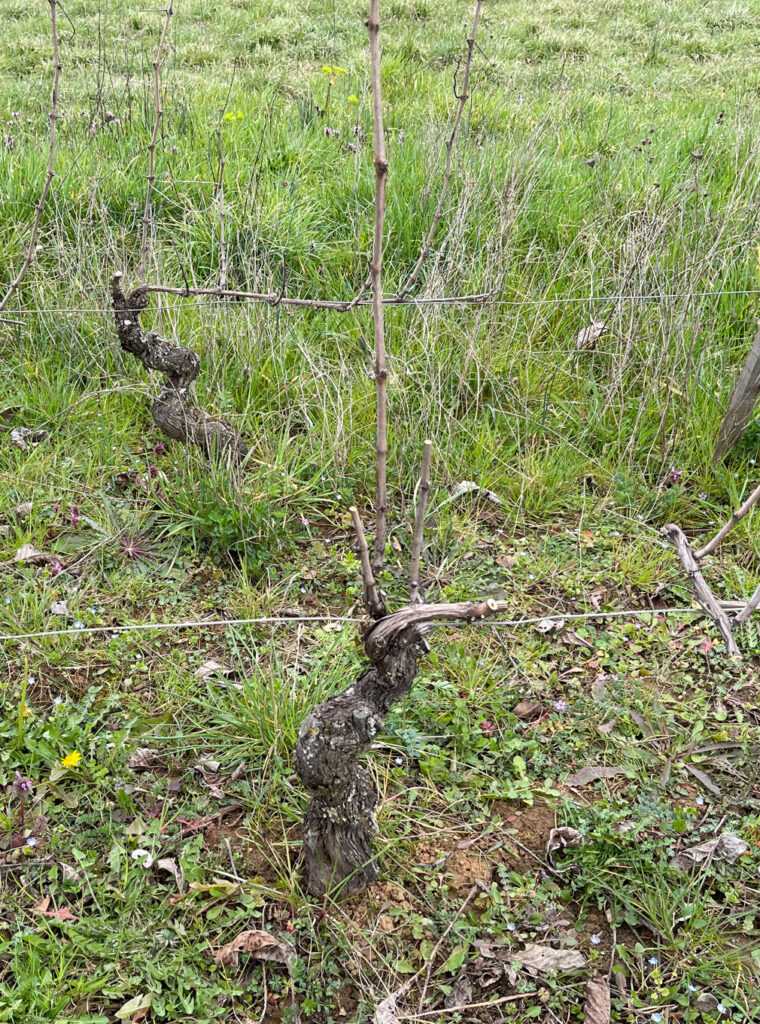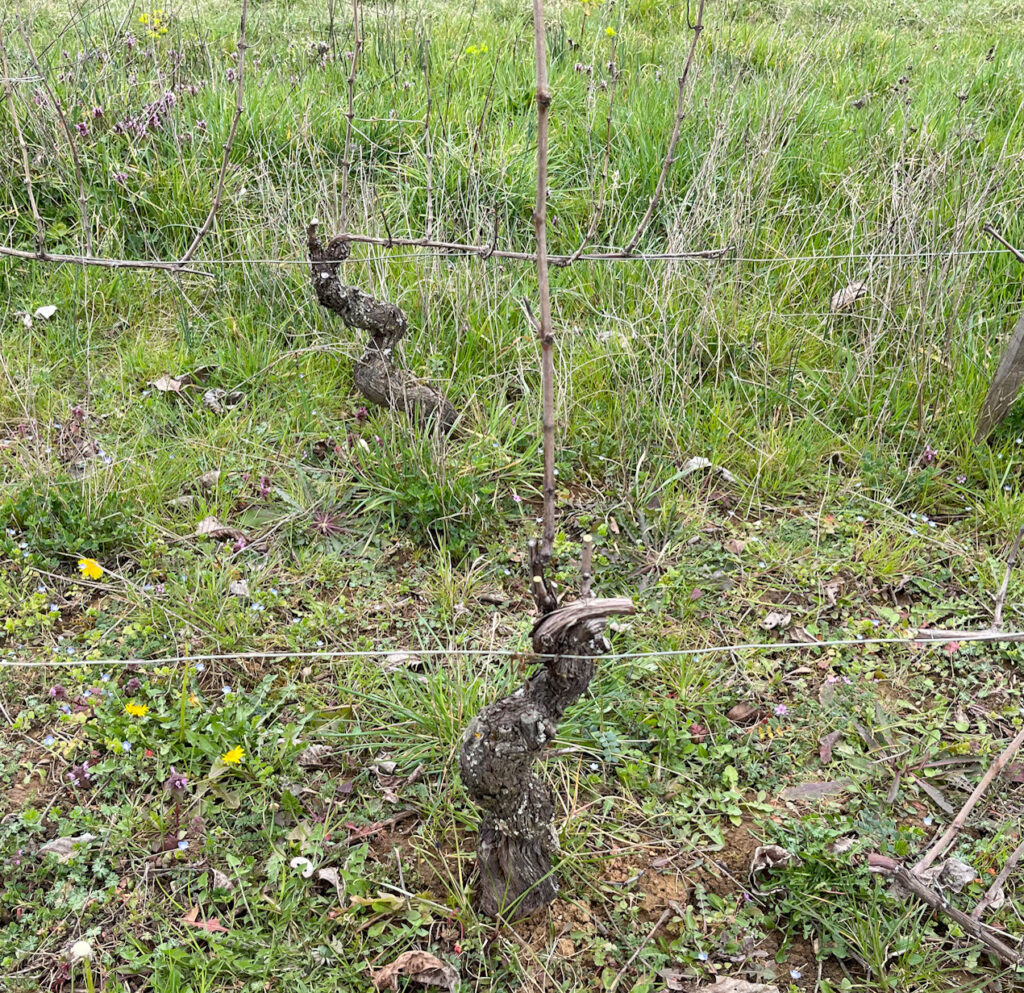The years 2016 and 2021 both suffered enormous damage from spring frosts, in Burgundy and elsewhere. This encouraged vignerons to begin seeking a lasting solution to the global warming-related spring-frost problem.
Some have adapted their pruning schedules from winter to late in March, hence risking less frost damage. But there is also a more adaptable solution that can be employed.
Two-step pruning
Two-step pruning is spreading like wildfire. But it is not a perfect solution, and it has its weaknesses.
Two-step pruning removes most of the previous year’s wood on the traditional timescale of December/January (demontage), leaving only the two branches that will become the canes supporting (eventually) the current year’s fruiting shoots. These two branches are left long and largely unpruned. They get their final pruning (taille definitive) late: in March or even April, and they are not bent and attached to the support wire until after that.
With this method, the sap rise that gives impetus to bud break is delayed, pushing the start of the vegetative cycle back and leaving the vine much less susceptible to spring frost, should there be one.
I’m not sure my illustration below shows a clear picture, but it will give you an idea:


The question arises, however: What is the optimal date for the final pruning? This is a complex matter, with pros and cons.
When to do the second step
Too early, and vignerons risk having too little acrotony – meaning that buds closest to the vine stem grow too quickly. Normally, acrotony produces hormones that inhibit the growth of the buds near the stem in favour of those farthest from it. By doing the final prune too early, bud break at the base is not delayed long enough, leaving the frost risk in place on the most valuable buds (those needed not just for the current year’s growth, but for the following year’s as well).
Prune too late, and the vigneron risks tiring the vine, as it will lose nutrients and carbohydrates in the shoots that are removed by the final pruning. In addition, the vigneron risks being behind schedule for ébourgeonnage (shoot thinning) if spring is early.
The answer is so far blowing in the wind. But more and more growers are using this technique in frost-prone areas, despite there being quite a lot of extra work involved in the two-step process.

 - A true vin d’émotion – a Burgundy of passion
- A true vin d’émotion – a Burgundy of passion - A truly hedonistic wine – lively and enjoyable
- A truly hedonistic wine – lively and enjoyable - A vivacious wine for pure indulgance
- A vivacious wine for pure indulgance - A Vin Vif - fresh, energetic and with a light appearance
- A Vin Vif - fresh, energetic and with a light appearance
Leave a Reply
You must be logged in to post a comment.